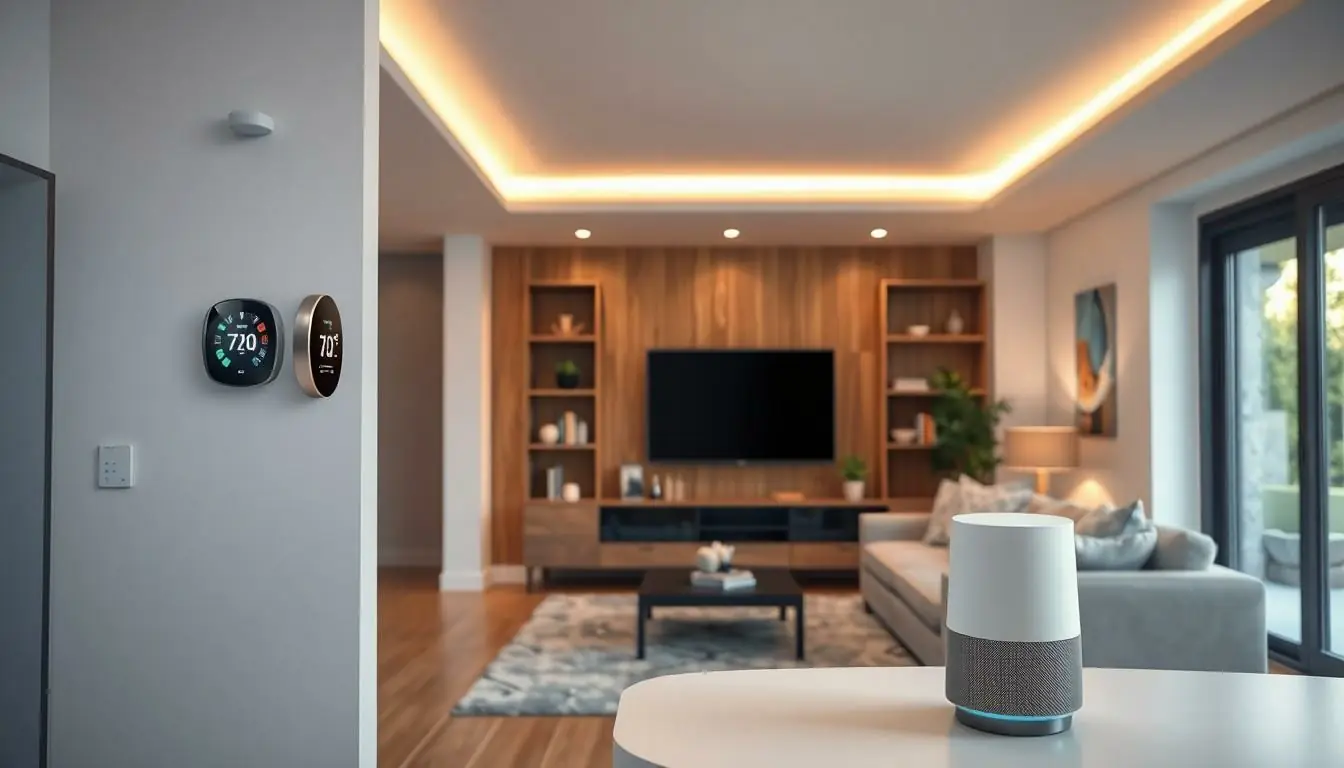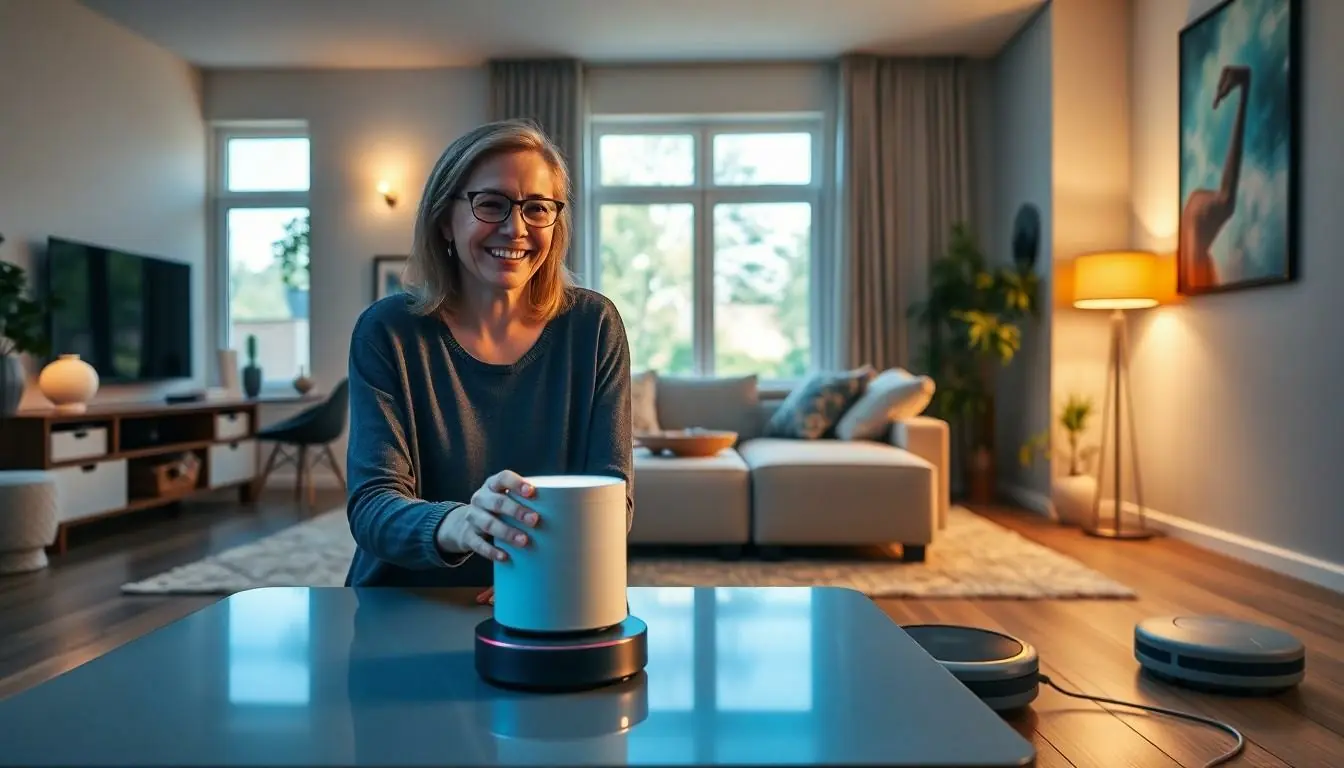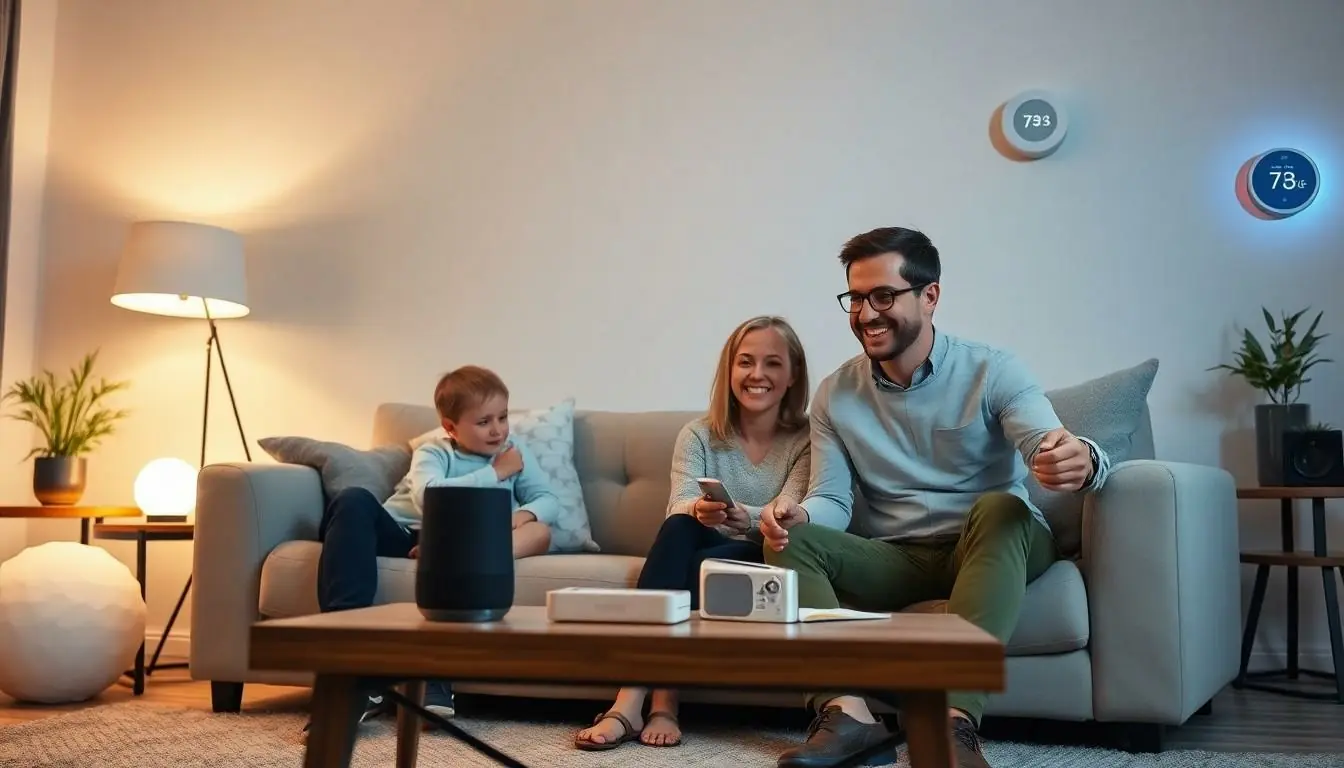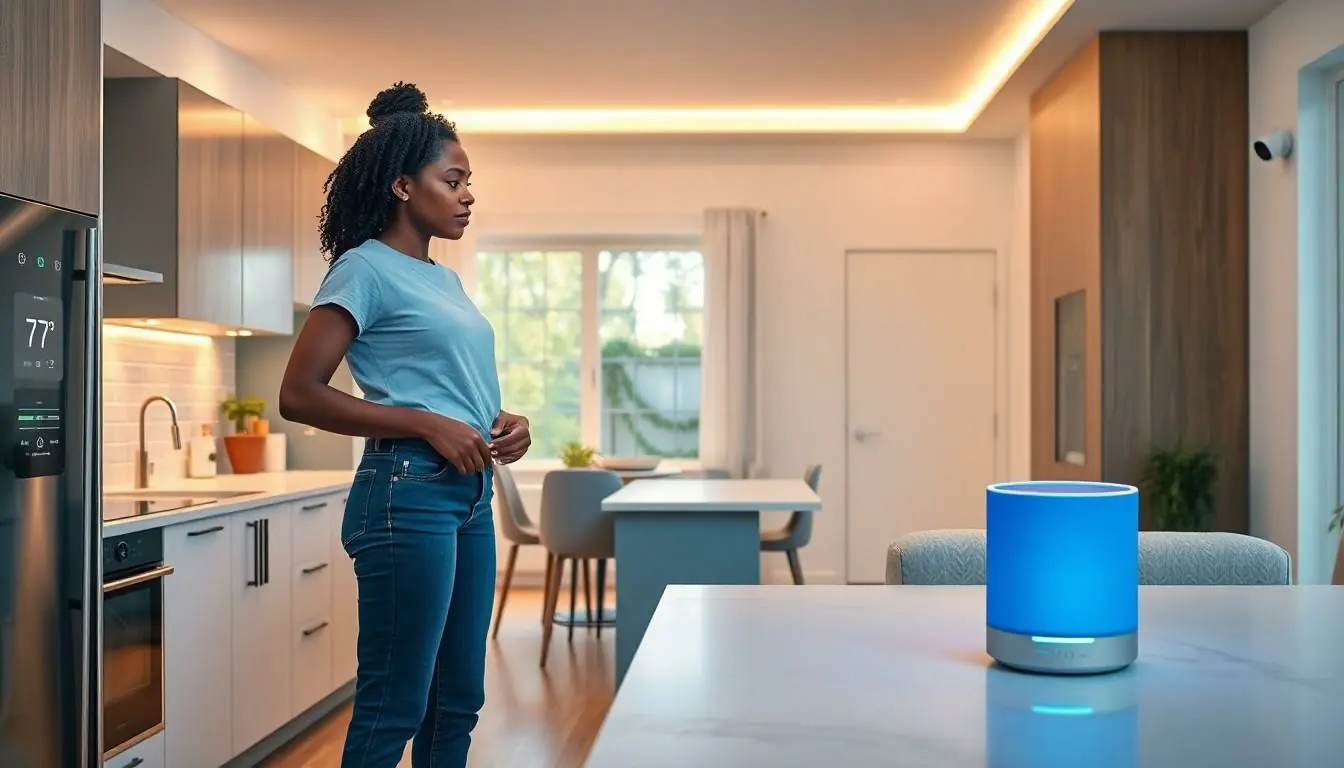Imagine waking up to the sound of your coffee brewing and your lights gently dimming to the perfect morning glow—all thanks to your trusty robotic helpers. In today’s world, smart homes are no longer the stuff of science fiction; they’re your new reality. Robotics is transforming the way people live, turning mundane tasks into effortless experiences.
Table of Contents
ToggleOverview of Robotics in Smart Homes
Robotics plays a critical role in the advancement of smart homes. Automated devices enhance user convenience by performing daily tasks. These smart systems utilize sensors and artificial intelligence for efficiency. Vacuum robots exemplify this, cleaning homes autonomously and adapting to various surfaces effectively.
Smart thermostats optimize energy consumption by learning user habits, adjusting temperature accordingly. Lighting systems offer remote control and automation, enhancing both security and ambiance. These technologies exemplify the interconnectedness of devices, ultimately creating a seamless living environment.
Robotic assistants, such as voice-controlled devices, facilitate communication and task execution through voice commands. Various applications exist, from managing schedules to controlling compatible home devices, which enhance overall convenience.
Home security has also transformed, with robotic surveillance systems monitoring homes in real-time. Integration of cameras and sensors provides homeowners with peace of mind. Data collected by these systems can be accessed remotely, allowing for proactive management of security concerns.
Health and wellness applications emerge through robotics as well. Smart medication dispensers remind users to take medications on time, ensuring adherence and enhancing health outcomes. Additionally, robotic caretakers assist the elderly, offering companionship and basic assistance.
Robotics significantly transforms smart homes, simplifying tasks and enhancing security, convenience, and health. The intersection of robotics and smart technology offers a glimpse into an efficient, automated future.
Key Technologies in Smart Home Robotics

Smart home robotics relies on several key technologies that enhance functionality and user experience. Two significant components are artificial intelligence and sensor technologies.
Artificial Intelligence Integration
Artificial intelligence (AI) transforms smart home devices into intuitive systems. AI enables devices to learn from user behaviors, optimizing their functionality over time. For instance, smart thermostats adjust heating and cooling based on daily routines. Voice-controlled assistants interpret commands and provide personalized responses, streamlining household interactions. AI algorithms analyze data from various devices, allowing for cohesive automation across the home. Through natural language processing, these systems respond accurately to voice inquiries, enhancing usability. Continuous advancements in AI ensure smarter, more responsive home environments.
Sensor Technologies
Sensor technologies form the backbone of smart home robotics. These devices gather real-time data, enabling automation and enhancing user convenience. Infrared sensors detect movement, while temperature sensors monitor climate conditions. Smart cameras implement motion detection to enhance security by sending alerts to homeowners. Environmental sensors analyze air quality, adjusting systems accordingly to maintain a healthy home atmosphere. Combined with automated responses, sensor technologies create a seamless experience in managing home environments. The integration of various sensors fosters improved energy efficiency and security within smart homes.
Benefits of Robotics in Smart Homes
Robotics significantly enhances the functionality of smart homes through various features that improve user experience and household management.
Enhanced Security Features
Robotics greatly enhances home security. Automated surveillance systems monitor properties in real-time, ensuring constant observation. Motion detectors trigger alerts for unusual activities, allowing homeowners to respond promptly. Smart door locks enable remote access controls, offering convenience and safety. Video doorbells provide visual verification of visitors, enhancing communication. This comprehensive approach ensures peace of mind while away from home.
Increased Energy Efficiency
Robotics contributes to substantial energy savings in smart homes. Smart thermostats learn user preferences and adjust settings accordingly, optimizing heating and cooling. Automated lighting systems turn off when no one is present, preventing unnecessary usage. Energy monitoring devices track consumption patterns, enabling smarter decisions. AI-integrated appliances operate during off-peak hours, reducing energy bills. These features collectively create a more efficient household, benefiting both the environment and homeowners.
Challenges and Concerns
Challenges exist in integrating robotics into smart homes, particularly regarding privacy and technical limitations.
Privacy Issues
Privacy concerns arise as robotics collect and store vast amounts of data. Users may worry about their personal information falling into the wrong hands. Security breaches can happen, potentially exposing sensitive data, including daily routines and habits. In addition, voice-activated devices capture conversations, leading to fears of eavesdropping. Homeowners must address these risks by implementing strong cybersecurity measures and regularly updating system passwords. Overall, balancing convenience and privacy becomes crucial as smart homes become more common.
Technical Limitations
Technical limitations hinder the full potential of robotics in smart homes. Device compatibility issues prevent seamless integration across different manufacturers. Some systems may not communicate effectively, causing frustration for users. Connectivity problems can also arise, affecting device performance and functionality. Furthermore, battery life of robotic devices may limit their operational time, especially for cleaning robots. Users often rely on regular charges to maintain efficiency. Addressing these limitations requires ongoing advancements and standardizations in technology to ensure a cohesive smart home experience.
Future Trends in Robotics for Smart Homes
Robotics in smart homes will continue evolving, with many innovative applications emerging. Increased integration of artificial intelligence enhances automation, allowing devices to anticipate user needs better. Smart refrigerators might suggest recipes based on available ingredients, promoting efficient meal planning. Enhanced robotic vacuum cleaners are set to become more adept at navigating complex home layouts.
Emerging technologies aim to improve energy efficiency further. Smart thermostats could learn user habits even more accurately, adjusting heating and cooling dynamically to maximize savings. Energy monitoring systems will likely provide real-time feedback, enabling homeowners to make informed decisions about energy use. Additionally, smart lighting systems may start employing advanced sensors to detect occupancy, adjusting brightness levels automatically.
Home security systems, too, are on the cusp of major advancements. Surveillance drones could provide live feeds directly to homeowners’ smartphones, enhancing real-time monitoring capabilities. Integration of facial recognition technology and AI might allow smart doorbells to alert users to visitors or package deliveries instantly.
Healthcare applications are gaining traction as well. Telehealth robots might assist in routine health checkups, offering remote monitoring for the elderly or chronically ill. Smart medication dispensers will increasingly remind users of medication schedules, reducing the risk of missed doses.
User privacy concerns remain paramount. Future developments will focus on improving data security to safeguard personal information. Enhanced encryption techniques and transparent data policies may help alleviate fears related to hacking or eavesdropping. Furthermore, ongoing dialogues about ethical uses of AI in home environments are crucial to building trust among users.
Collectively, these trends signal a transformative future for robotics in smart homes, offering increased convenience, security, and efficiency.
Robotics in smart homes is reshaping how people interact with their living spaces. As technology continues to evolve, the integration of AI and sensor technologies will further enhance convenience and efficiency. Homeowners can expect smarter devices that anticipate their needs and streamline daily tasks.
The potential for improved security and energy management is significant, offering peace of mind and cost savings. While challenges like privacy concerns and technical limitations persist, ongoing advancements promise to address these issues. The future of smart homes looks bright, with robotics playing a pivotal role in creating safer, more efficient, and more enjoyable living environments.







